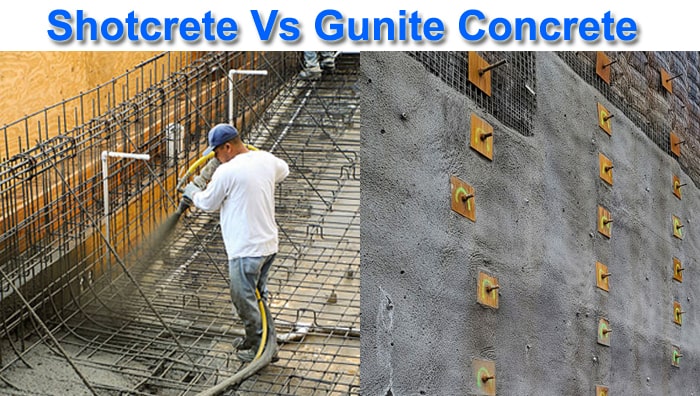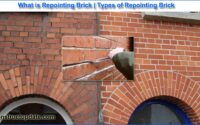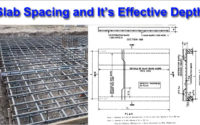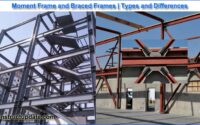What is Shotcrete Concrete | What is Gunite Concrete | Shotcrete Vs Gunite
In this article, you will learn about the guniting and shotcreting processes, as well as the differences between Shotcrete and Gunite Concrete.
Shotcreting and guniting are two of the most common and extensively utilised construction procedures.
The goal of employing shotcrete and Guniting is the same, however, the application methodology is different.
Shotcreting and guniting are two separate procedures. Many people are unfamiliar with the terms guniting and shotcreting.
Tunnels, underground buildings, slope stabilisation, structural restorations, and swimming pools all benefit from sprayed concrete.
What is Shotcrete:
Shotcrete is a method of applying concrete to a vertical or above surface by projecting it at a high velocity.
The application’s impact helps to solidify the concrete. Although shotcrete’s hardened qualities are comparable to those of traditional cast-in-place concrete, the nature of the application method results in an excellent bond with most substrates and quick or instant capabilities, especially on complex forms or shapes.
Shotcrete requires less formwork and can be more cost-effective than traditional concrete placement. Shotcrete can be applied in a wet-mix or dry-mix method.
Before being introduced into the delivery hose, the wet-mix shotcrete method thoroughly mixes all materials, including water. The water is added to the mix at the nozzle in the dry-mix shotcrete process. Shotcrete is appropriate for curved and thin elements and is utilised in new construction and restorations (ACI 506R)
Guniting:
Guniting is a method of applying mortar or concrete to a surface by pushing it at a high velocity through a hose or spray gun.
Dry Shotcreting is another name for the guniting procedure. With the use of a spray gun, a mixture of mortar or concrete is sprayed under high pressure onto a surface.
Guniting is one of the most successful ways of mending damaged concrete, and it is extensively utilised.
The guniting procedure is employed in the building of slope stabilisation domes, retention walls, water tanks, and pools, among other things.
Conversion has a wide range of uses, including the reinforcement of ancient structures, the lining of reservoirs and canals, and the waterproofing of surfaces that come into direct contact with water.

Advantage of Shotcrete Concrete:
- Shotcreting creates a solid and consistent coating of concrete on the surface.
- When compared to traditional concrete, which requires formwork, shotcreting is more cost-effective.
- Shotcreting can be used in situations when formwork cannot be built.
- From a safe distance, the concrete can be applied to one nozzle.
Disadvantage of Shotcreting:
- The following are some of the shotcrete process’s drawbacks:
- Shotcreting used premixed concrete. It must be applied fast on the site.
- If extra water is added to the premix concrete, there is a risk of cracking.
- When opposed to the guniting method, shotcreting is a little more expensive.
Application of Shotcrete:
- It was utilised in tunnels, mines, drainage audits, and exploitative audits to open underground apertures.
- Stabilization and support for excavation foundations are provided on rock slopes when paired with rock and soil fixing procedures.
- It’s utilised to safeguard channel linings, bridge safety, and debris flow stabilisation.
- It’s also utilised to repair reinforced concrete structures like bridges, as well as for chemical processing and crop handling.
- Used to restore deteriorated marine structures such as bulkheads, piers, and seas, among other things.





